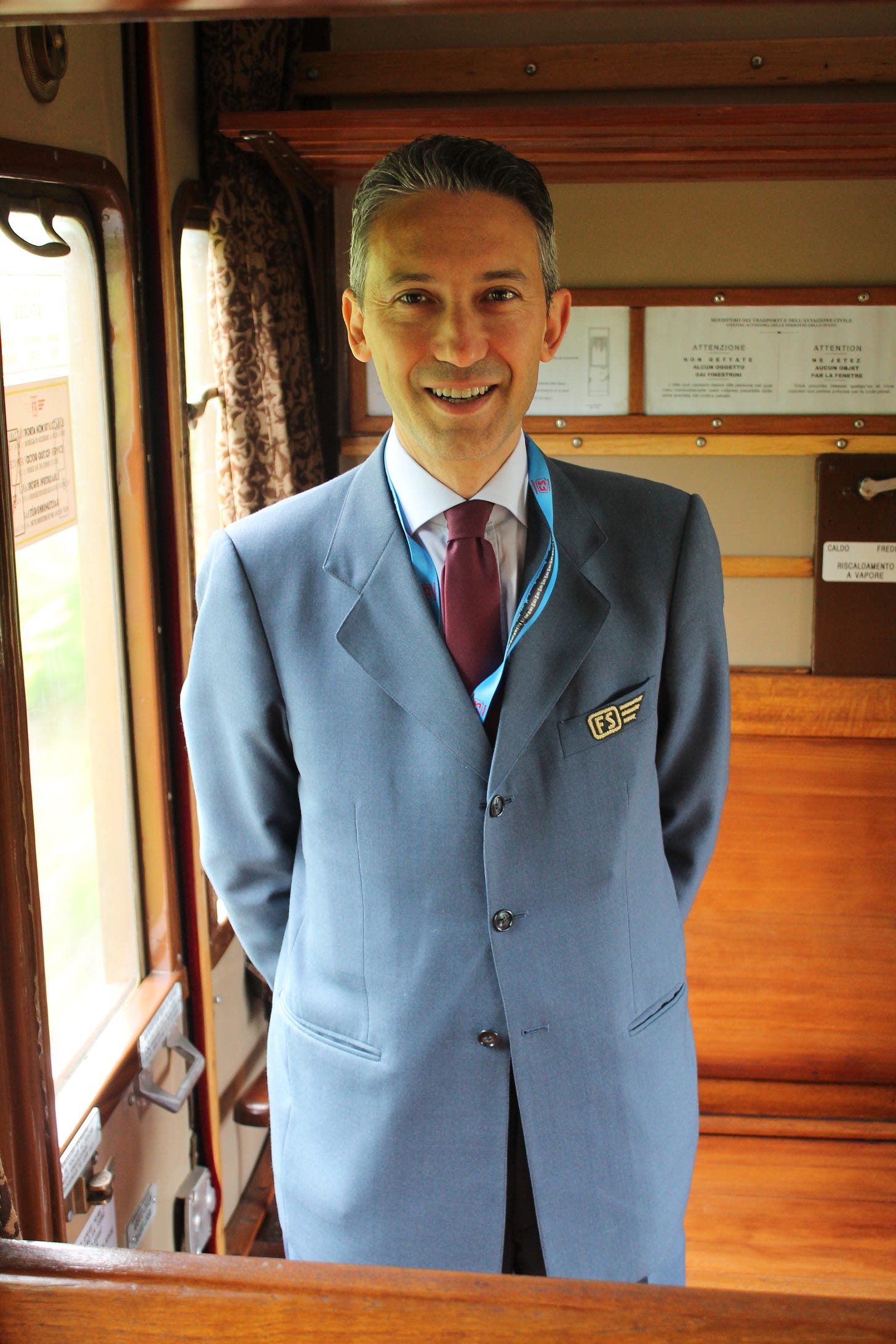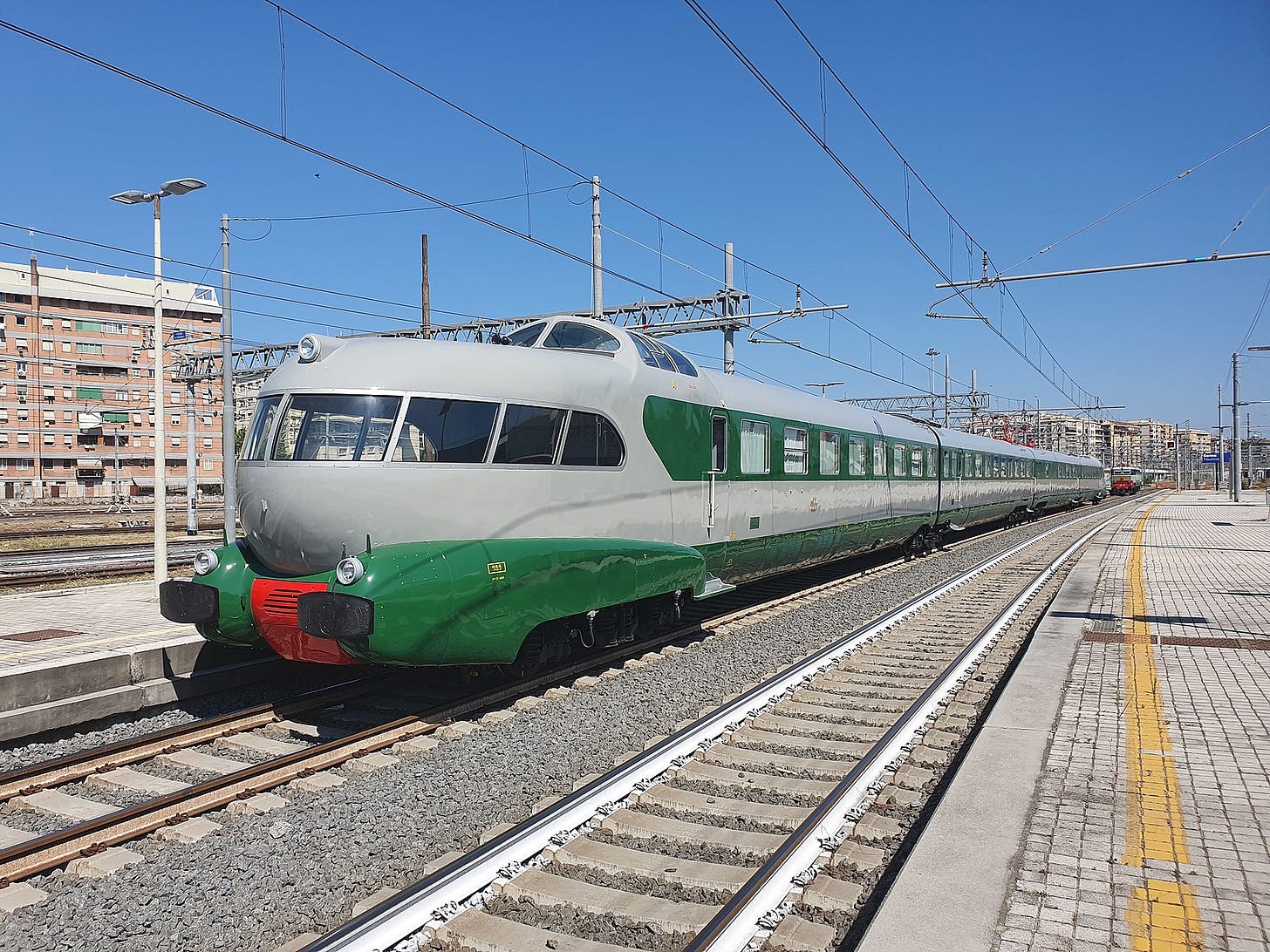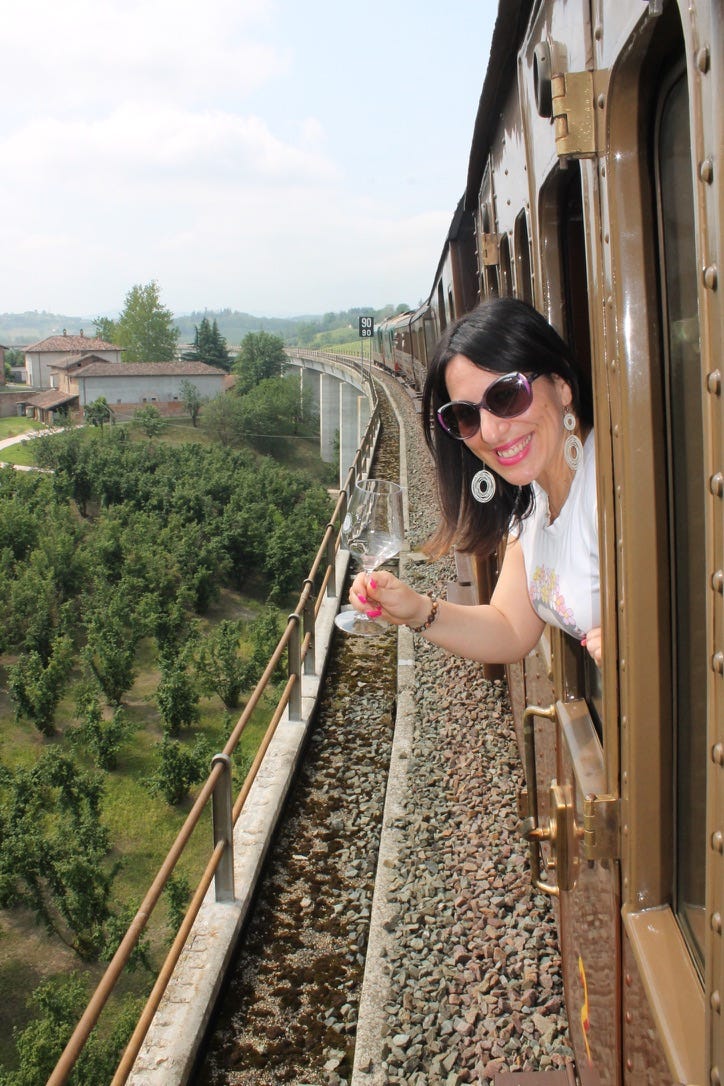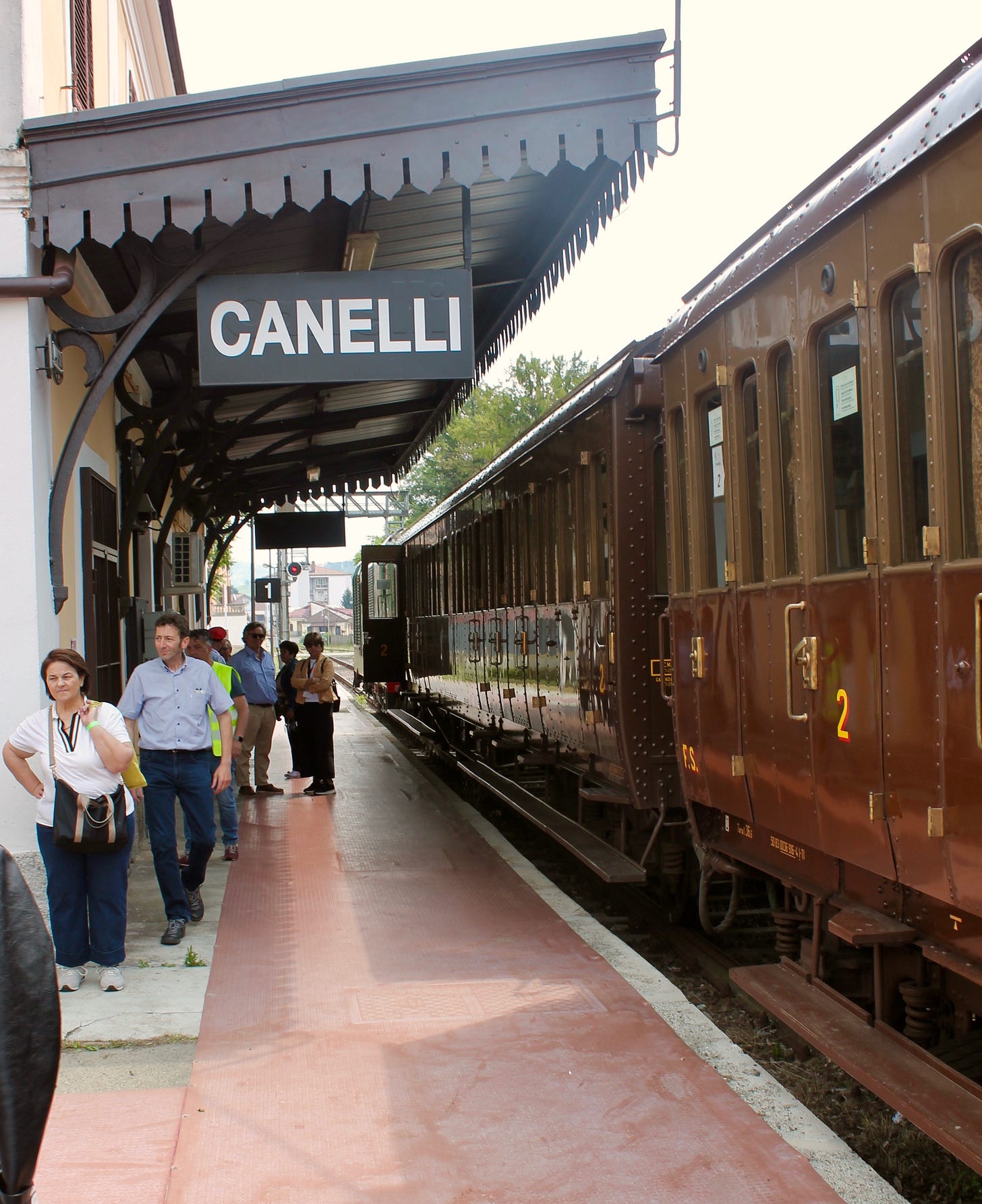You know me. I’m a supporter, and enthusiastic rider of, high-speed trains. The shinkansens of Japan, the Aves of Spain, the TGVs of France, even the Acela (still the only real high-speed train in Canada and the US!)—I’ve ridden them all, and love the way they provide a downtown-to-downtown alternative to polluting and carbon-emitting airplanes and cars.

There’s one thing I like more than a fast train, though, and that’s a slow train. I’m not talking about the stuck-in-the-cornfield, always-running-late Via Rail or Amtrak experience, but the kind of trains that are meant to go slow, all the better to allow you to take in the scenery along the way. I’ve ridden the cog railway to the Swiss resort of Zermatt, taken the Darjeeling Himalayan Railway, which switchbacks through precipitous terraces bristling with tea plants, and even spent a blissful morning riding vintage streetcars at the Seashore Trolley Museum in Maine.
You’ve probably heard of the Slow Food Movement, which encourages people to step away from McDonald’s and the whole fast-food industry, by embracing local ingredients and taking the time to savor the whole experience of eating. I think what the world needs is a Slow Travel Movement. (I fell in love with the slowest form of travel of all, walking, when I did the pilgrimage to Santiago de Compostela, an experience I wrote about in my second book, the travelogue The End of Elsewhere: Travels Among the Tourists.) There is some concern that in Europe, the success of high-speed rail is killing off local and regional train service; as the main lines between such cities as Barcelona and Madrid, or Paris and Marseilles, get the bulk of funding, smaller rural routes are languishing and sometimes disappearing. Were it more widely adopted, Slow Travel, and more specifically, Slow Rail, would be a way of invigorating neglected areas—bringing low-impact day-trippers and international travelers to villages and neglected rural areas that could use a boost.
Earlier this year, I pitched a story about riding historic trains to the American magazine Travel + Leisure, and this summer, I went to Italy to write the feature. (You’ll find “On the Right Track,” in the Dec-Jan. 2023/2024 issue, which, as they say, is on newsstands now.) The article should be online soon, with some beautiful photos, so I’m not going to repeat what I wrote in that article in this dispatch, but I will give you some of the background that didn’t make it into the piece.
When I saw a post from an Italian rail advocate about something called the Fondazione FS on social media last year, my eyes lit up. “FS” refers to the Ferrovie dello Stato Italiane, Italy’s state-run railway network, and this non-profit foundation was dedicated to not only restoring and displaying historic trains, but also to running them on “rami secchi,” or dry branches, as rail routes that have fallen into disuse are known. What’s more, they were offering excursions at surprisingly low prices, as little as €20 for a half-day outing. Nothing to do, in other words, with the luxury Rocky Mountaineer, Orient Express, or Palace on Wheels experience for the ultra-rich. In that lyrical Italian way, they’ve dubbed the program Binari Senza Tempo, or “Timeless Tracks.”
Fondazione FS has restored 400 vehicles, some going back to the age of steam, which it runs on 19 lines through areas of natural beauty or cultural interest. Many are warehoused the National Railway Museum, located on an 1839 railroad—Italy’s first—near Naples. I spent a few hours getting lost in the foundation’s website (which is partly in English), trying to decide which train to ride. I was tempted by the spectacular Arlecchino, whose multi-colored interior, designed by architect Gio Ponte for Rome’s 1960 Olympic Games, features plush leather armchairs, and now runs between Milan and Brescia. Or maybe I’d board the steam locomotive that travels from the Adriatic port of Trieste to the medieval abbey of Rosazzo.

I finally settled on Il Treno di Dante, which is the most elaborate of all the excursions on offer: a three-day rail “cruise,” from Florence, the birthplace of Italy’s national poet, to Ravenna, where his tomb is found. I busted out my Italian and emailed the organizers of the excursion (the foundation works with private operators to handle the logistics of many of the outings), and was soon perusing a brochure which described But ten days before I was due to leave, spring floods in the Emilio-Romagna washed away large sections of track; with genuine remorse, the organizers informed me the Treno di Dante would be cancelled that year. (I’m available in 2024, Pierluigi, just sayin’!) I scrambled to find an alternative, and settled on a day-long excursion to the village of Canelli, organized by a group called “TrEno Langhe, Monferrato and Roero,” which promised a leisurely ride through the wine country of Piedmont, with tastings along the way.
I describe that excursion, which featured late-morning tastings of (excellent) Spumante wine and in-depth discussions of the 1920s-vintage railway cars from the foundation’s volunteers—impassioned railfans all—in the article (I’ll post a link here when it comes online). It was a dreamlike day, with a hike to a medieval castle, visits to the “underground cathedrals” where thousands of stacked Spumante bottles are aged, and a multi-course alfresco lunch in the sloping, cobbled streets of Canelli. The train brought 300 visitors to this little village; before the weekly excursions began, Canelli’s train station was abandoned and graffiti-covered, but now it had been restored, and was covered with fresh-coats of canary-hued paint. We poured thousands of euros into local cafés, restaurants, and shops, and did it without clogging the streets with cars or tour buses. (And I got to dine with the current owner of the castle, and the scion of one of the area’s biggest wineries, which was an experience in itself.)
The Fondazione FS’s excursions remain surprisingly under-the-radar. (During the pandemic, Madonna and her entourage booked one of the trains, and recorded this video of their ride through the olive groves of Puglia.) I was the only non-Italian on the train, which made it feel all-the-more special; the lack of foreigners, I suspect, stems from the fact that there is very little information provided to speakers of English. (There was, however, an overrepresentation of Italian “influencers” on the train; they documented every glass of wine and every minute of the trip with selfie-sticks and even drones.) That said, it’s pretty easy to book a ticket, and enjoy the scenery, without a strong command of the language. And in my experience, Italians have a knack for making themselves understood, and ensuring that everybody feels welcome.
On the return trip to Turin, I had one of those magical experiences—familiar to pilgrims, but unknown to drivers—which I’ve come to see as the essence of Slow Travel. It’s the sense, precious in its fleetingness, that you’re not a tourist, nor an outsider, but a natural part of the landscape.
In the woodsmoke-scented dusk, I was lulled by that most soothing of sounds, the swooshing onrush of forward motion, punctuated by the clattering of steel wheels over rail ties, and amidst my reveries, waving back to children who came out of red-tile-roofed villas to hail the return of the slow, stately train.








